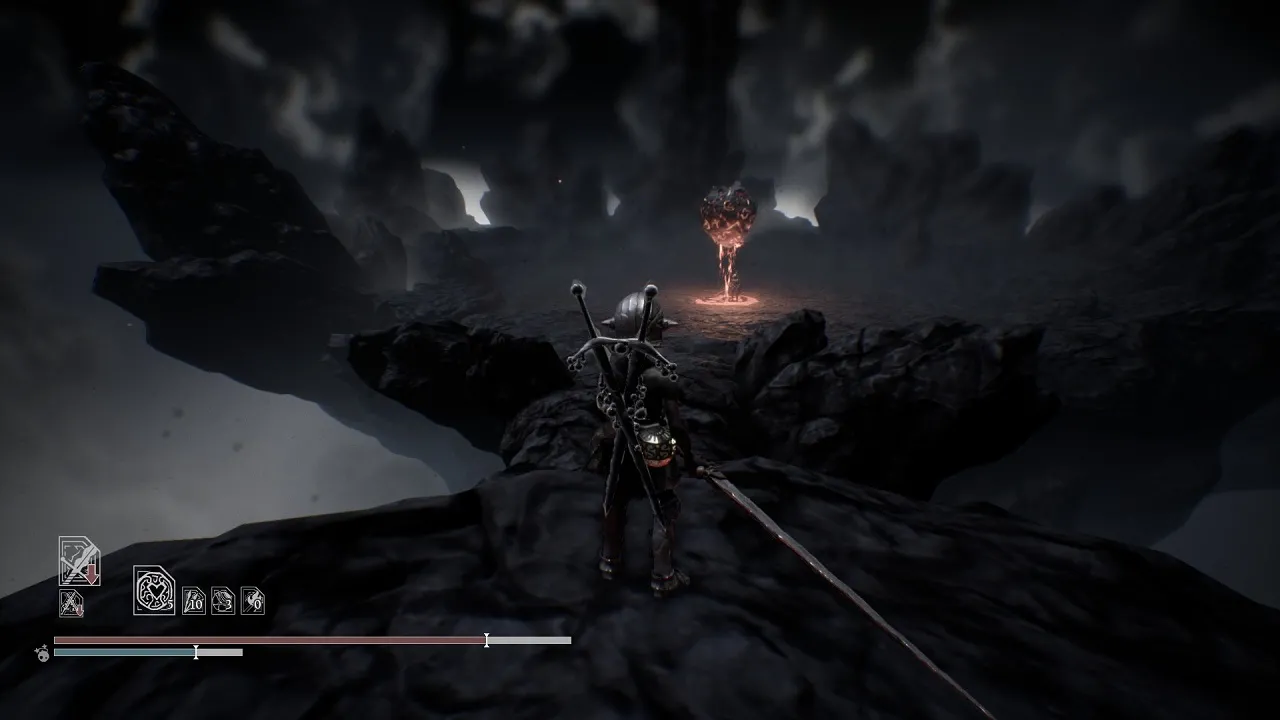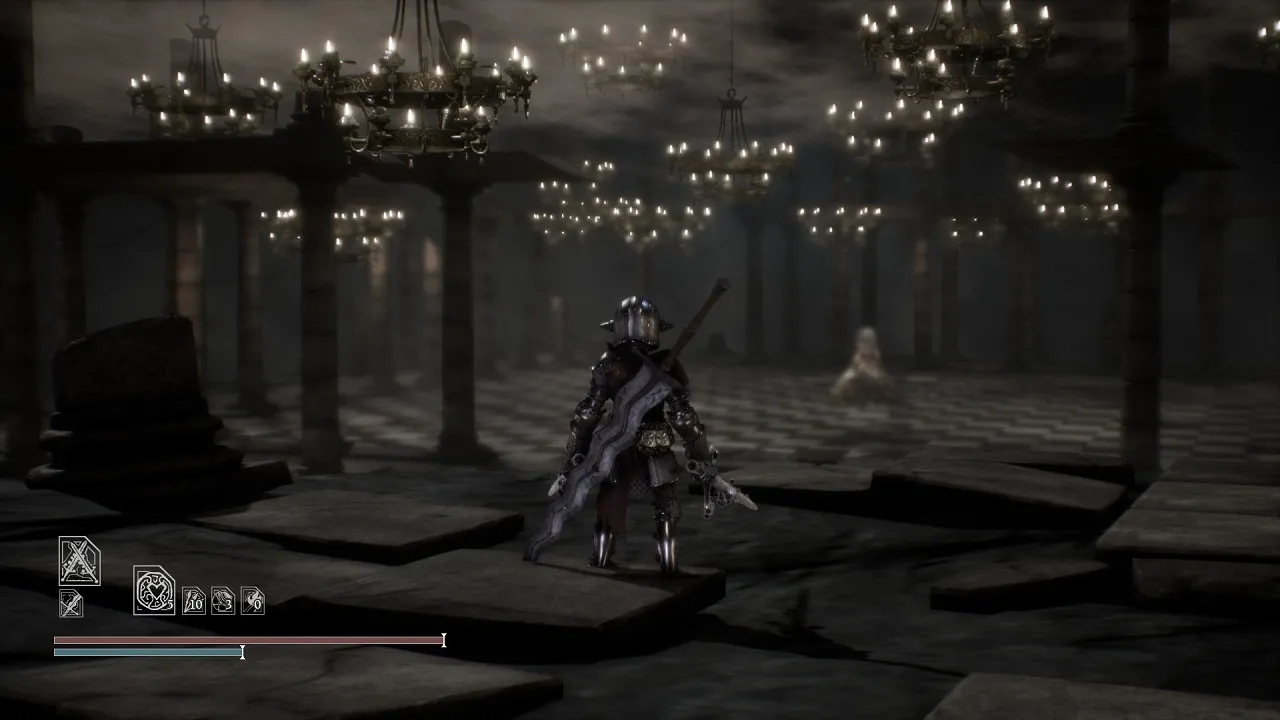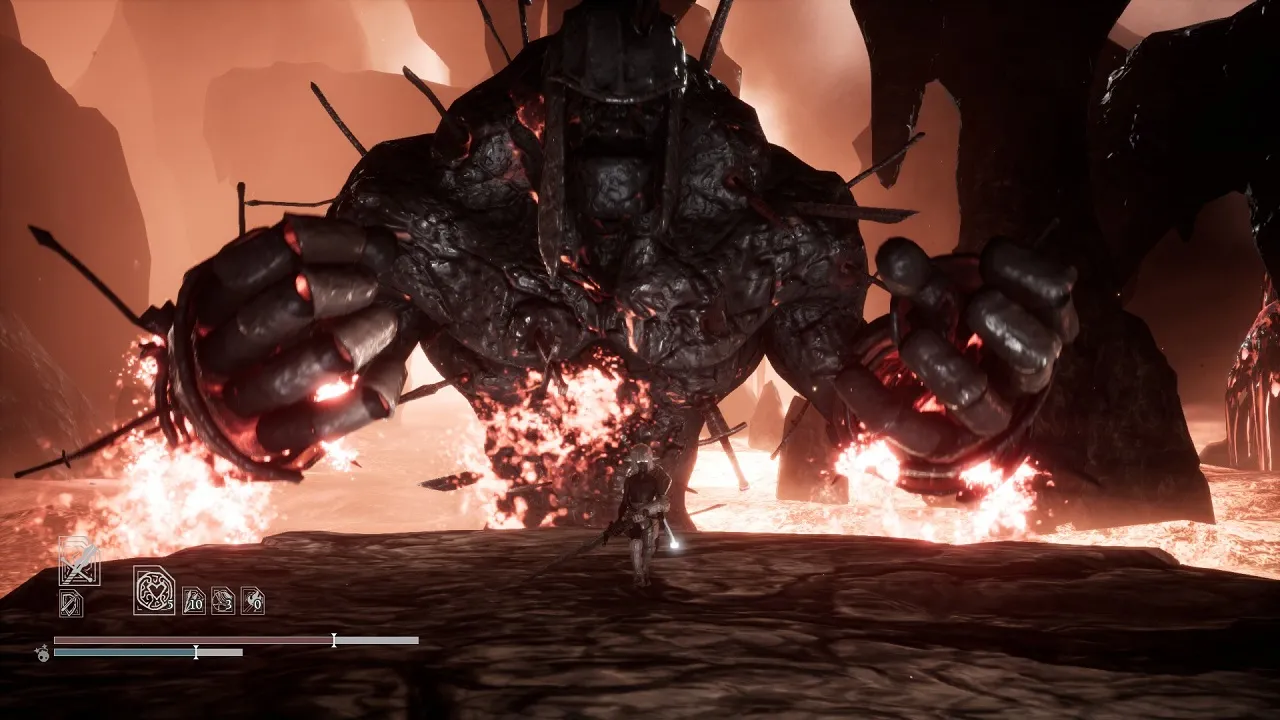
Sinner: Sacrifice to Redemption: A Soulslike Focused on Boss Battles
Contents
The legacy of the Dark Souls series is undeniable, inspiring countless games and a whole new subgenre. Many developers have attempted to capture the essence of Dark Souls, with varying degrees of success. Some have taken its core mechanics and forged their own paths, while others have simply tried to replicate the formula. Sinner: Sacrifice to Redemption, developed by the small, seven-person team at Dark Star Games, falls squarely into the latter category. However, Sinner doesn’t merely copy; it streamlines. It hones in on one of Dark Souls‘ most compelling aspects – the boss battles – and makes it its own.
 Sinner: Sacrifice of Redemption – Boss Battle
Sinner: Sacrifice of Redemption – Boss Battle
A Journey of Atonement
Like Dark Souls, Sinner: Sacrifice to Redemption features a nameless protagonist burdened by past sins. These sins manifest as seven demonic bosses representing Pride, Lust, Wrath, Gluttony, Envy, Sloth, and Greed. The player’s journey is one of atonement, facing each demon in a grueling trial. With each victory, fragments of the protagonist’s backstory are revealed, though the narrative remains minimalist and somewhat ambiguous.
Initially, the game’s similarities to Dark Souls can feel derivative. However, for those willing to invest time and embrace the dark, mysterious world, Sinner offers a unique experience centered around intense, challenging boss encounters.
 Sinner: Sacrifice of Redemption – Environment
Sinner: Sacrifice of Redemption – Environment
Challenging the Demons Within
With only eight boss battles, the game eschews complex puzzles, environmental traps, and hordes of minor enemies. Instead, it focuses on pure, visceral combat. The player is free to choose the order in which they face the seven deadly sins, but each encounter comes with a price. Defeating a boss unlocks the next, but also inflicts a permanent penalty on the player. These penalties range from reduced health and stamina to weakened attacks and fewer healing items.
This sacrifice mechanic adds a layer of strategic depth. Choosing which boss to fight next becomes a crucial decision, influencing the difficulty of subsequent encounters. The game’s challenge comes not from unfair stat scaling, but from these self-imposed limitations, forcing players to adapt and strategize.
Epic Boss Battles
The true strength of Sinner lies in its diverse and creatively designed bosses. Each of the seven deadly sins is brought to life with unique attack patterns and visual flair. Victory requires careful observation, learning the enemy’s tells, and adapting one’s approach. The resulting battles are tense and rewarding, offering a genuine sense of accomplishment with each hard-fought victory.
 Sinner: Sacrifice of Redemption – Combat
Sinner: Sacrifice of Redemption – Combat
Each boss encounter feels like a multi-stage puzzle, demanding precise timing and strategic execution. While the game lacks a traditional leveling system, overcoming these challenges provides a tangible feeling of progression, honing the player’s skills and rewarding persistence. Sinner encourages players to learn from their mistakes, fostering a “I can do this!” mentality rather than frustration.
Room for Improvement
Despite its strengths, Sinner: Sacrifice to Redemption feels somewhat unfinished. While it successfully emulates the dark atmosphere and challenging combat of Dark Souls, it falls short in other areas.
 Sinner: Sacrifice of Redemption – Another Scene
Sinner: Sacrifice of Redemption – Another Scene
The soundtrack, while atmospheric and evocative, suffers from jarring transitions and repetitive loops. The narrative, too, feels underdeveloped, lacking a cohesive thread to tie the boss encounters together. Finally, the control scheme, while functional, deviates significantly from the Souls formula, requiring a period of adjustment.
Conclusion
Sinner: Sacrifice to Redemption offers a unique take on the Soulslike genre, focusing on intense, challenging boss battles. While its narrative and technical aspects could use refinement, the core gameplay loop is engaging and rewarding. For fans of Dark Souls seeking a streamlined, boss-focused experience, Sinner is worth considering.





Comments (0)